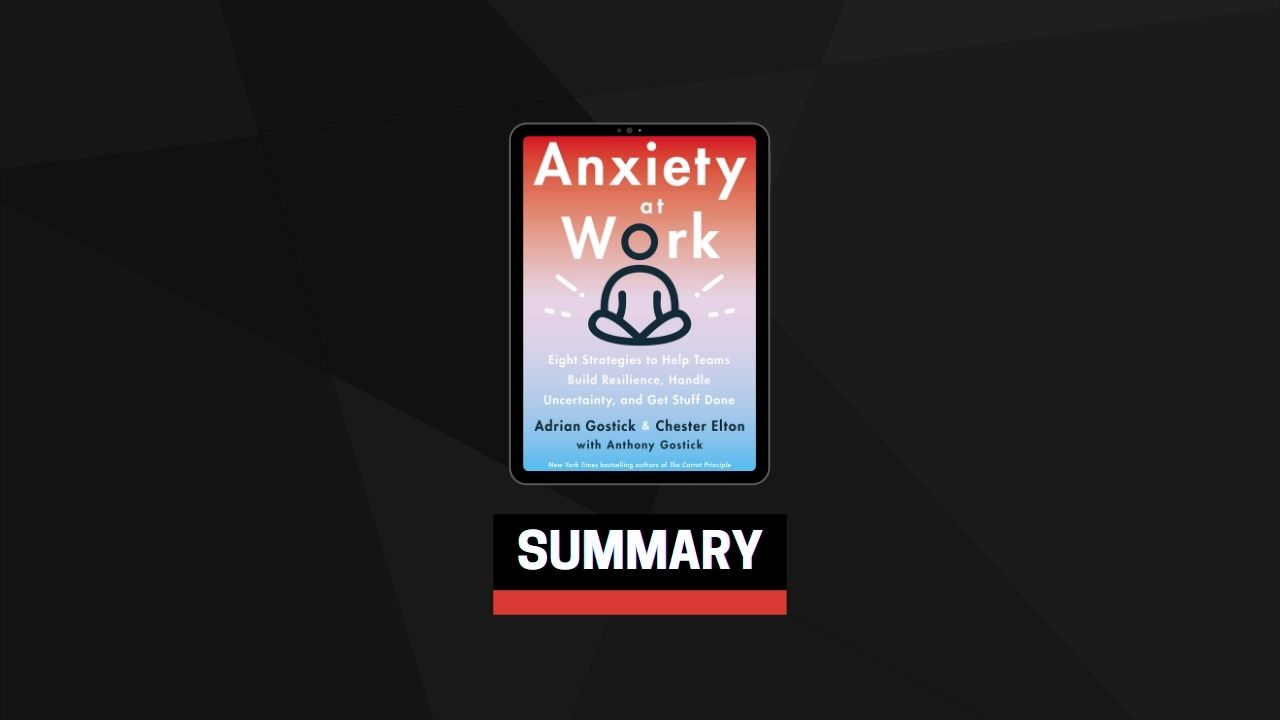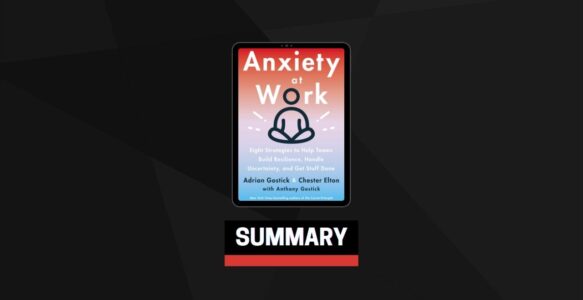Creating a Healthy Place to Work
Working to make team members feel understood, accepted, and secure is an extraordinary team-bonding opportunity. Research leaves not the slightest doubt that it’s also a powerful productivity booster. Devoting a little extra time and attention to this new way of managing will pay off in spades, and that is a great anxiety reliever for leaders as well, many of whom are concerned with their own job security. According to management consulting firm McKinsey, “numerous studies show that in a business-as-usual environment, compassionate leaders perform better and foster more loyalty and engagement by their teams. However, compassion becomes especially critical during a crisis.”
#1 Help Team Members Deal with Uncertainty
Uncertainty can trigger various responses in people, often with negative consequences on performance. The most common uncertainty for today’s employees is whether or not a job will last.
Uncertainty is exacerbated when managers don’t communicate enough about challenges facing their organizations and how those issues may affect their people and their teams.
A good deal of employee uncertainty is about their own performance and development, i.e., How am I doing? and Do I have a future here? By meeting one-on-one regularly to evaluate performance and growth opportunities, leaders can help team members avoid misreading situations while enhancing their engagement and commitment to the organization.
Leaders can use a set of methods to help reduce uncertainty: 1) make it okay to not have all the answers, 2) loosen your grip in tough times, 3) ensure everyone knows exactly what’s expected of them, 4) keep people focused on what can be controlled, 5) have a bias to action, and 6) offer constructive feedback.
#2 Help Team Members Deal with Overload
Leaders often fail to appreciate that constantly demanding more and more work in less and less time will lead to employee frustration, rising anger levels, and eventually anxiety and burnout.
Managers may believe it is an individual failure when an employee is overwhelmed, and yet more than 90 percent of employees feel burned out at least some of the time. The problem is often organizational.
Most approaches businesses take to helping people cope with crushing workloads are aimed at fixing the person instead of focusing on underlying issues with the amount of work assigned and with the ways in which employees are managed.
When employees feel anxiety from overload, managers can start by helping them break work into optimal chunks.
Other methods to help team members better cope with workload expectations and reduce anxiety levels include: 1) create clear roadmaps, 2) balance loads, 3) rotate people, 4) closely monitor progress, 5) help people prioritize, 6) avoid distractions, and 7) encourage R&R.
#3 Help Team Members Chart Their Way
Research shows younger workers are more eager to move up or out, and more than 75 percent of Gen Zers say they believe they should be promoted within their first year on the job. Creating more steps on the career path can help.
Some 90 percent of younger workers “highly value” career growth and development opportunities, and organizations that effectively nurture their people’s desire to learn are 30 percent more likely to be market leaders.
Some 87 percent of millennials ranked job security as a top priority when looking for a job. That is more than likely going to be even higher in the post-pandemic world.
Following a set of methods can reduce employees’ anxiety about where they’re heading in their careers. They include: 1) create more steps to grow, 2) coach employees about how to get ahead, 3) help employees assess their skills and motivations, 4) use a skill development flow, 5) make learning real-time, 6) tailor development to the individual, 7) carefully calibrate growth opportunities, and 8) encourage peer-to-peer support.
#4 Help Team Members Manage Perfectionism
There are certain jobs when flawless execution is vital. Perfectionism isn’t about a rational quest to get things right when they have to be; it’s a corrosive impulse to appear perfect, and often to push others for flawlessness as well.
Studies have found perfectionists have higher levels of stress, burnout, and anxiety. They can also spend so much time tinkering or deciding on a course of action that they get little done. A key difference between unhealthy perfectionism and healthy striving is being able to define realistic expectations and knowing when to say “that’s good enough.”
To identify someone who might have perfectionist tendencies, look for those who seek excessive guidance, seem loath to take any sort of risk, and treat most decisions as if they were a matter of life and death. Perfectionists can also tend to become overly defensive when criticized, and they can become preoccupied with their missteps or the mistakes of others.
A series of methods can help lead those with perfectionist tendencies, including: 1) clarify what good enough is, 2) share the wisdom of innovators, 3) treat failures as learning opportunities, 4) regularly check in on progress, 5) team them up, and 6) discuss the issue openly.
#5 Help Team Members Find Their Voice
Many people today are conflict-avoidant—sidestepping uncomfortable situations and holding back on giving honest feedback.
The best work groups are places of high trust and high candor, where team members debate to drive problem-solving. When employees are free to speak up and know their voices will be heard, it can increase engagement, enhance psychological safety, and bolster self-confidence and a sense of ownership.
Leaders facilitate this by encouraging debate in a safe environment. They set ground rules and encourage all voices to be heard, de-escalate quarreling, ask team members to clarify their opinions with facts, and create clear plans and timelines for moving forward.
Managers can spot employees who may be conflict-averse if they shy away from difficult conversations, try to change the topic or flee the scene when things get tense, get uncomfortable during debates, or resist expressing their feelings or thoughts during meetings.
Methods that managers can use to coach their employees to find their voices and work through difficult conversations include: 1) address the Issue, Value, Solution, 2) don’t delay, 3) stick to facts, 4) use your words, 5) assume positive intent, 6) have a plan, 7) give and take, and 8) get comfortable with the uncomfortable.
#6 Help Marginalized Team Members Feel Valued and Accepted
There has been a historic pattern of anxiety in particular groups within the workplace—those too often made to feel like “others.” Of particular concern are women, people of color, those on the LGBTQ+ spectrum, members of religious minorities, and those with disabilities.
Many in these communities must hide their true identities. But when managers create cultures where people feel comfortable being themselves, dramatic performance gains can be unlocked as everyone is able to focus all their attention on work.
Many leaders do not understand the level of implicit bias that occurs in our work cultures. Microaggressions are biases that reveal themselves in often subtle ways and leave people feeling uncomfortable or insulted. They can take a psychological toll on the mental health of recipients and can lower work productivity and problem-solving abilities.
Methods to help those who are marginalized feel valued and included in any team include: 1) listen up, 2) sponsor, 3) stand up, and 4) advocate.
#7 Help Team Members Build Social Bonds
Exclusion can be toxic to anxiety levels. Fear of missing out (FOMO) may harm mental well-being since humans have such a strong need to belong. Some 71 percent of professionals say they have experienced some degree of exclusion within their team.
There is much team leaders can do to spot those who may seem to be left out—all the more important when some or all of a team works remotely: Which person is regularly cut off during group discussions? Who doesn’t seem to be interacting with anyone? Regular one-on-ones are the best way to understand what’s really going on.
Leaders can encourage inclusion by ensuring that all team members can contribute in meetings and have their voices heard in a calm and organized manner, buddy new hires up with friendly seasoned employees, and spend time in every meeting recognizing contributions.
Other methods for helping move a team from exclusion to connection include: 1) build camaraderie, 2) find a common core, 3) foster connections and friendships, 4) provide frequent validation, and 5) include remotes.
#8 Help Team Members Build Confidence
One of the simplest and most effective ways to motivate employees to achieve is by regularly expressing gratitude. Research shows offering positive reinforcement produces impressive boosts in team performance and significantly reduces anxiety levels in team members.
Leaders don’t express gratitude to their people about work well done anywhere nearly as frequently or effectively as they should.
High-performing employees are often gratitude sponges and perceive a lack of attention from a manager as a sign that things are not good; silence can cause worry to creep up on even the best of workers.
Regular expressions of gratitude are like deposits in a Bank of Engagement. They build up reserves for when an employee’s work has to be corrected. Research shows gratitude also helps people develop a greater capacity to handle stress.
Other practical methods to turn doubts into assurance include: 1) make gratitude clear, specific, and sincere, 2) match gratitude to magnitude, 3) preserve gratitude’s significance, 4) provide gratitude to high-flyers, too, and 5) keep gratitude close to the action.
Conclusion
In the world before, discussing subjects like anxiety was taboo, including and accommodating those who didn’t fit the mold too much work, biases and judgment all too common. In the world after, individualism will be valued; needless, harmful anxiety lessened; and those who struggle accepted with compassion.
It’s time to ditch the before and follow the after.


